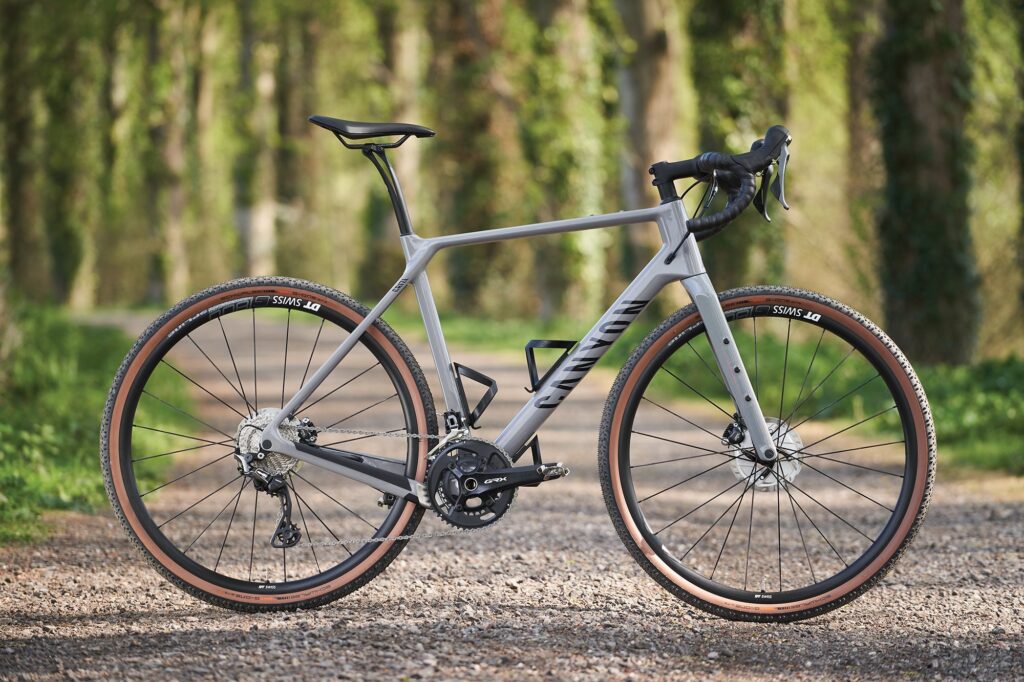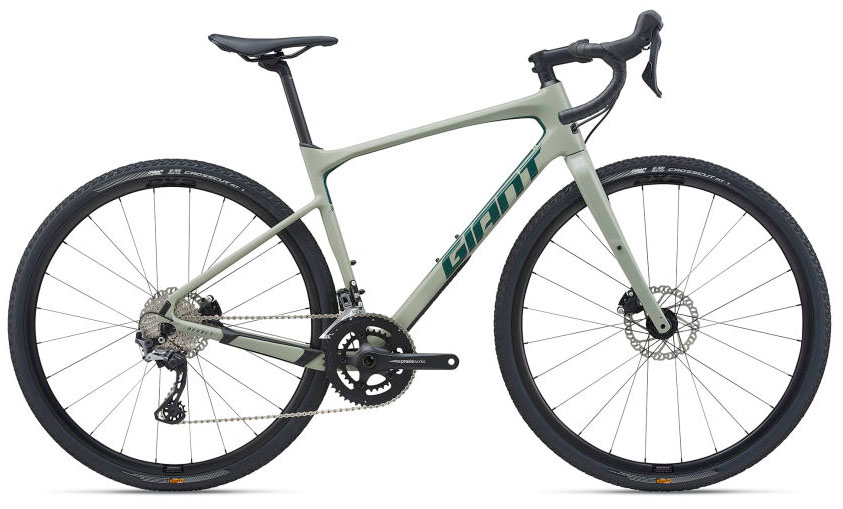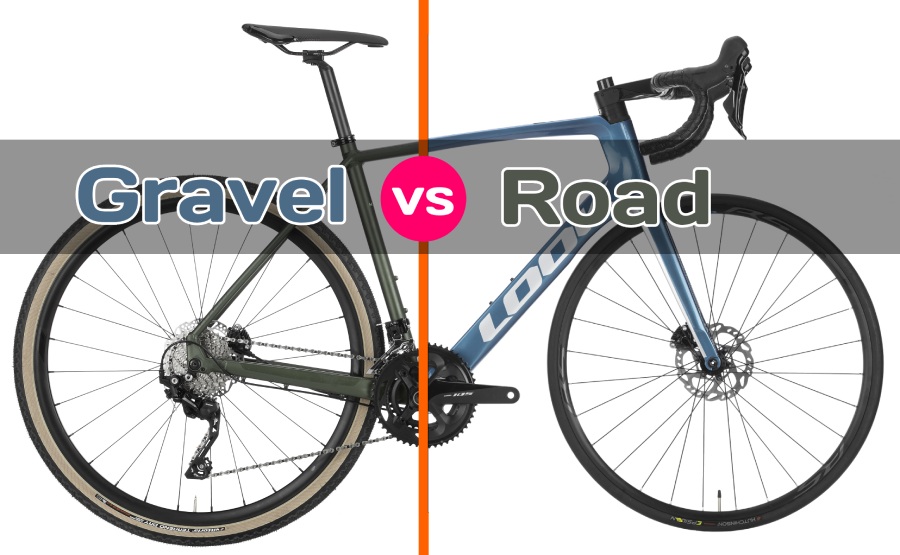


“Why are gravel bikes so expensive?”This inquiry resonates like a distant bell within the thoughts of passionate cyclists, lingering with a thirst for understanding.
Gravel bikes are expensive due to their specialized design, premium materials, high-quality components, versatile tires, extensive research and development, limited production, and customization options.
Gravel bikes, known for their versatility and ability to conquer various terrains, do come with a price tag that might make you pause. These bikes, designed to tackle everything from smooth roads to rough trails, are a marvel of engineering and innovation.
In this exploration, we will delve into the factors that contribute to the higher cost of gravel bikes. From specialized frame materials to precision components, it’s a journey that reveals the meticulous craftsmanship behind these two-wheeled adventurers.
So, if you’ve ever wondered why gravel bikes command a premium, join us as we unveil the intricacies that make them worth every penny.
Related: Why are mountain bikes so expensive
What defines a gravel bike?



Gravel biking has emerged as one of the most exciting and versatile niches in the cycling world, and at its heart lies the gravel bike. But what exactly defines a gravel bike, and why has it gained such popularity? Let’s delve into the key characteristics and features that distinguish these rugged machines.
Read More: Can you ride mountain bike anywhere
Robust Frame and Geometry:
Gravel bikes are known for their sturdy frames, crafted from materials such as aluminum, steel, or carbon fiber. These materials are chosen to balance durability and weight, with steel providing a forgiving ride and carbon offering lightweight performance.
The geometry of gravel bikes is distinct, favoring an endurance-oriented design. This results in a more relaxed and upright riding position compared to the aggressive posture of road bikes. This geometry promotes comfort during long rides and enhances stability on uneven and challenging terrain.
Versatile Tires:
One of the key features of gravel bikes is their versatile tire setup. Gravel bike tires are wider than those found on traditional road bikes, typically ranging from 35mm to 50mm or wider.
This additional width provides superior traction on gravel, dirt, and rough surfaces while allowing efficient riding on paved roads. Gravel bike tires also sport tread patterns that strike a balance between rolling efficiency and grip on loose or uneven terrain, making them adaptable to various riding conditions.
Disc Brakes:
Gravel bikes are equipped with disc brakes, often hydraulic. These brakes offer consistent and powerful stopping performance, even in adverse conditions like rain or mud. This is crucial for off-road riding, where precise control is essential.
Wide Gear Range:
Gravel bikes are equipped with drivetrains that offer a broad range of gears. This extensive gearing setup enables riders to conquer steep ascents and maintain speed on descents.
Achieving this versatility involves a combination of front chainrings and rear cassettes, ensuring riders are well-prepared for the diverse terrains encountered during gravel adventures.
Mounting Points:
Gravel bikes are designed with multiple mounting points. These are strategically placed to accommodate racks, panniers, and various accessories. This feature is especially valuable for bike-packing and touring, allowing riders to carry essential gear for extended journeys and adventures.
In essence, a gravel bike is a versatile and rugged bicycle designed to conquer a wide range of terrains, offering comfort, stability, and adaptability to riders seeking adventure beyond the beaten path.
Whether you’re embarking on epic backpacking trips or exploring gravel roads in your area, a gravel bike is your trusty companion for the journey.
Why Are Gravel Bikes Different and Expensive?



Gravel bikes have gained popularity for their versatility and unique characteristics, but they also come with a higher price tag compared to some other bicycle types.
Let’s dive into the factors that set gravel bikes apart and contribute to their cost.
Purpose-Built Design:
Gravel bikes are purpose-built for versatility. They are designed to handle a wide range of terrain, from gravel roads to pavement to light trails. This versatility demands specialized frame geometry, tire clearance, and components, which can increase manufacturing costs.
Frame Materials:
Gravel bikes often feature lightweight yet durable materials like carbon fiber, which can be more expensive to produce than traditional steel or aluminum frames.
These materials are chosen to offer the best combination of strength, weight, and comfort.
Tire Technology:
Gravel tires are more comprehensive and feature unique tread patterns to provide traction on various surfaces. Developing and manufacturing these specialized tires adds to the overall cost.
Disc Brakes:
Gravel bikes typically come with disc brakes, which offer superior stopping power and control, especially in adverse conditions. High-quality hydraulic disc brakes can contribute to the bike’s price.
Gearing:
Gravel bikes often have a wider range of gears to accommodate steep climbs and fast descents, requiring precision engineering and potentially pricier components.
Accessories and Mounting Points:
Gravel bikes are equipped with multiple mounting points for racks, fenders, and additional gear, enhancing their utility for bike-packing and touring.
Research and Development:
The constant evolution of gravel bike technology, including aerodynamics, suspension, and materials, involves significant research and development expenses, which are reflected in the bike’s cost.
Niche Market:
Gravel biking appeals to a specific niche of cyclists who prioritize versatility and adventure. Manufacturers may produce these bikes in smaller quantities, leading to higher prices due to economies of scale.
In conclusion, gravel bikes offer a unique riding experience and versatility, but these advantages come with a higher cost due to purpose-built design, advanced materials, specialized components, and a niche market.
While they may be more expensive upfront, the value they provide for adventurous riders often justifies the investment.
Read More: Can you put road tires on a mountain bike
What Are the Key Differences Between Gravel Bikes and Other Bicycle Models?



Related: Difference between gravel bike and mountain bike
| Aspect | Gravel Bikes | Road Bikes | Mountain Bikes |
| Terrain Suitability | Versatile (Gravel, Pavement) | Pavement and Smooth Roads | Off-Road (Trail, Dirt, Rocks) |
| Frame Material | Aluminum, Steel, Carbon Fiber | Aluminum, Carbon Fiber | Aluminum, Carbon Fiber, Steel |
| Tire Width | Wider (35mm to 50mm or more) | Narrow (23mm to 28mm) | Wide, Knobby (2.2″ to 2.6″+) |
| Geometry | Endurance-Oriented | Aggressive, Aerodynamic | Relaxed, Upright |
| Brakes | Disc Brakes (Hydraulic) | Rim Brakes (Caliper) | Disc Brakes (Hydraulic) |
| Gearing | Wide Range for Versatility | Higher Gear Ratios for Speed | Wide Range for Climbing |
| Suspension | Rigid or Minimal Suspension | Rigid | Front and Rear Suspension |
| Mounting Points | Multiple for Accessories | Few or None | Limited for Accessories |
| Purpose | Adventure and Exploration | Speed and Endurance | Trail Riding and Descents |
| Typical Use | Gravel and Bikepacking | Road Racing and Group Rides | Off-Road Trails and Jumps |
Exploring the Pros and Cons of Gravel Bikes



Gravel bikes have taken the cycling world by storm, offering a unique blend of versatility and performance. However, like any bicycle type, they come with their own set of advantages and disadvantages.
Let’s delve into the pros and cons of gravel bikes to help you decide if they’re the right choice for your riding style.
Pros of Gravel Bikes:
Versatility:
Gravel bikes are designed to handle a wide range of terrain, from gravel roads and dirt trails to pavement. This versatility makes them ideal for adventurous cyclists who enjoy exploring different routes.
Comfort:
Gravel bikes often feature more relaxed geometry and wider tires, providing a comfortable and smooth ride even on rough surfaces. This is particularly beneficial for long-distance rides and bikepacking.
Tire Clearance:
Gravel bikes can accommodate wider tires with varying tread patterns. This allows riders to customize their setup based on the terrain they plan to tackle, enhancing grip and control.
Mounting Points:
Gravel bikes typically have numerous mounting points for racks, fenders, and additional accessories. This makes them suitable for bikepacking and carrying gear on extended trips.
Disc Brakes:
Most gravel bikes come equipped with disc brakes, providing excellent stopping power and control, especially in wet or muddy conditions.
Cons of Gravel Bikes:
Weight:
Gravel bikes can be heavier than road bikes due to their sturdy frames, wider tires, and additional accessories. This can make them less suitable for fast-paced road riding.
Slower on Smooth Roads:
While gravel bikes excel on rough terrain, they may not be as efficient as road bikes on smooth pavement. Riders might find themselves working harder to maintain high speeds.
Cost:
Gravel bikes, with their specialized components and features, can be more expensive than basic road or mountain bikes. However, the investment often pays off for avid adventurers.
Not Ideal for Extreme Terrain:
While gravel bikes can handle a variety of surfaces, they are not designed for extreme off-road conditions like downhill mountain biking or technical singletrack.
Learning Curve:
Gravel biking may require some adjustments in riding technique, especially if you’re accustomed to road cycling. Handling wider tires and navigating diverse terrain can take time to master.
In conclusion, gravel bikes offer a fantastic blend of versatility and comfort, making them a great choice for riders who enjoy exploring diverse landscapes. However, their weight and efficiency on smooth roads, along with the initial cost, are factors to consider.
Ultimately, the decision should align with your cycling preferences and the type of terrain you plan to tackle.
Conclusion:
In the world of cycling, gravel bikes have earned their reputation as versatile, all-terrain adventurers. They offer a unique blend of comfort, adaptability, and performance, making them a favorite among riders seeking diverse experiences.
However, the question remains: Why are gravel bikes so expensive?
The answer lies in the specialized features and components that define gravel bikes. Their frames are engineered for durability and stability, capable of handling rough terrains while maintaining rider comfort.
Wider tires with versatile tread patterns provide exceptional grip and control across a variety of surfaces. Mounting points for accessories, disc brakes, and other enhancements cater to the needs of bikepackers and long-distance adventurers.
While these features undoubtedly enhance the riding experience, they also contribute to the higher price tag. Gravel bikes demand precision engineering, quality materials, and attention to detail.
Additionally, the market for gravel bikes has surged in recent years, driving up demand and, subsequently, prices.
However, it’s crucial to view the cost of a gravel bike as an investment in versatility and capability. These bikes open up a world of riding possibilities, from gravel roads and dirt trails to long-distance tours and bikepacking adventures.
For those who crave exploration and seek new horizons on two wheels, the expense may be well justified.
In the end, the decision to invest in a gravel bike should align with your cycling aspirations and the type of terrain you plan to conquer. While they may be on the higher end of the price spectrum, their ability to unlock a wide range of cycling experiences makes them a compelling choice for many riders.
So, if you find yourself drawn to the allure of gravel biking, remember that the journey ahead is worth every pedal stroke.
FAQs:
What Makes Gravel Bikes Pricier Than Other Bicycles?
Gravel bikes are often pricier due to their specialized components, sturdy frames, and versatile features, making them ideal for various terrains.
Are There Affordable Gravel Bike Options for Beginners?
Yes, there are affordable gravel bike options for beginners, offering reliable performance without breaking the bank.
Do Expensive Gravel Bikes Offer Significant Performance Advantages?
Expensive gravel bikes offer enhanced performance through lighter frames, superior components, and advanced technology, ideal for serious riders.
Are There Ways to Find Deals on High-End Gravel Bikes?
Finding deals on high-end gravel bikes is possible through sales, promotions, or buying previous year’s models.
What Are the Must-Have Features That Justify Gravel Bike Prices?
Must-have features justifying gravel bike prices include durable frames, wide tires for versatility, disc brakes for control, and mounting points for accessories.



Welcome to Bikegenics, where passion meets performance! We are a leading online destination for all things related to mountain biking, dedicated to providing you with top-notch gear, expert advice, and an immersive community to fuel your two-wheeled adventures. With a commitment to excellence and a deep love for the sport, we strive to elevate your biking experience to new heights.
